by Stacey Kuhns
For those interested in minerals and gems, this may be the trip for you. Just be forewarned, it is hot, physical, dirty work, but can be very rewarding if you plan accordingly.
Approximately a year ago, my boyfriend and I decided we wanted to attend the annual Gem-O-Rama in Trona, California; a place I had never heard of (population 18). We began planning the trip, which basically was just finding a place to stay (there is no place to stay in Trona.
The nearest town is Ridgecrest, approximately 30 minutes away), and gathering the necessary tools and clothing needed for the trip. No tickets are sold ahead of time for the Field Trips. We planned for four days in the area, as it is approximately a three-and-a-half-hour drive to Ridgecrest from San Diego.
We stayed at the China Lake Naval Base in their guest lodging as my boyfriend is retired Navy, but there are a few nice looking hotels in the nearby town of Ridgecrest. Or, if you have an RV, there seems to be a number of camping areas you can stay in.
Being disabled and not a fan of the heat, I was apprehensive about this trip. I figured since it was in October in the desert, it would be cool enough for me to enjoy the Field Trips. The Gem-O-Rama is put on annually by the Searles Lake Gem & Mineral Society. The Field Trips take place in the mining town of Trona, which is a very depressed area. There are three Field Trips over the Saturday-Sunday program. Two on Saturday, a morning and afternoon dig, and one on Sunday, a morning dig.
You need to plan to do all three digs, as they are completely different from each other and different minerals are found at each dig. I recommend getting there very early to line your car up in the parking areas. You can then leave your vehicle to go purchase tickets for all three digs. They begin selling tickets at 7:30 a.m., but it is first come, first serve for spots at the dig sites and it goes by the order your vehicle is parked. They have a lead car who starts off and they then direct everyone else to follow in their vehicles. There is no cutting in line or anything like that. Cutting in line will get you banned from the digs.
I would recommend having very old clothing, that can be thrown away if necessary, tall rubber boots, gloves, a geologists pick (rock hammer), bottle brushes, toothbrushes, brine (which can be purchased at the General Store), boxes and buckets to carry your specimens, buckets to wash your specimens, First-Aid supplies, at least a case of water (in a cooler with ice is recommended), small trowel, small gardening shovel, steel tramping and digging bar, sunglasses, hat, and sunscreen. I would also recommend packing a picnic for Saturday as there is one restaurant in town and I would NOT recommend eating there. It was pretty awful.
There were quite a few families with young children on these digs and the kids loved it! They seemed to outlast the adults.
The first dig was a mud dig. I assumed (never assume) we would just find minerals in the mud (true) and wash them off easily in the brine troughs provided (false). The mud was extremely thick and tough to dig through, like clay. Minerals were easy to find but there were not enough troughs provided for the over 1000 people who showed up and they quickly became so muddy, it was not worth washing your minerals off there. (I recommend buying at least 4-5 bottles of brine the first morning at the General Store and washing the minerals off on your own, either by your car or at your campsite if you have one. The mud minerals need to stay in the wet mud until washed off. If the mud dries, it is like trying to scrub off cement from the minerals. Even with the wet mud, it was extremely difficult and physical trying to wash the minerals collected. (I still have a bucket of unwashed ones in my garage).
Some of our unwashed finds on the mud dig:
Saturday afternoon, was the Blow Hole "dig." There was not much digging necessary as they blow material out of a machine onto the salt flats. In that wet material are many, many crystals and minerals. They are very easy to locate and collect. But, it was approximately 115 degrees that afternoon with the sun beating down on the salt flats. Many people had brought easy-ups, chairs, and umbrellas. We were not in the know, so had none of these things.
Here is just a fraction of our uncleaned haul from the afternoon dig:
The most interesting dig for me, but the most physical for both of us, was the Sunday Halite dig. It was one of the most alien landscapes I had ever seen. It appeared we were digging in rivers of blood. Halite is a crystal formation, formed in brine lakes, that is normally pink in color (but can be white and dark rose). The best crystal formations to find are square ones. It takes a lot of strength and use of a heavy large pole with a blade on the end, to get down into the areas where the crystals are found. The best place to dig (we found out a little too late) is along the banks of the man-made brine lake.
Halite was my favorite mineral to find on the dig as I love the pink colors and the amazing crystal formations. This is also the dig where you may want to just toss your clothes in the trash. The salt dries quickly on clothing, causing it to stiffen and can lead to chafing if you continue to wear it.
These are not propped up by anything except themselves. Many people just leave their clothing propped up out there.
Me, after the dig. Just be prepared. Salt in the car, caked onto my sunglasses, all over my camera, in our skin, our hair, etc.
Would I do the Gem-O-Rama again, now that I know what to expect and what to bring? Nope, not a chance. Am I glad I did it once? Definitely. It was an experience I will never forget. Something I never thought I would do. It was exciting to find our own minerals instead of going to a show and purchasing them. I would recommend it for young families with children who love to be active and learn.

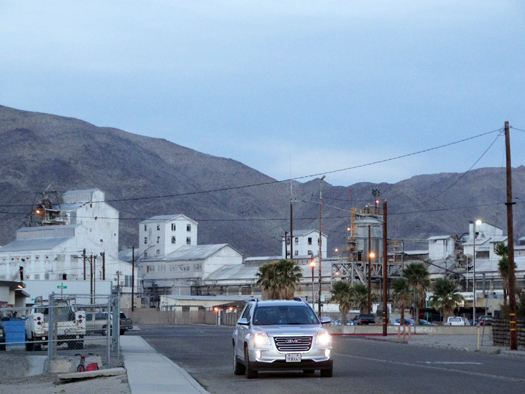



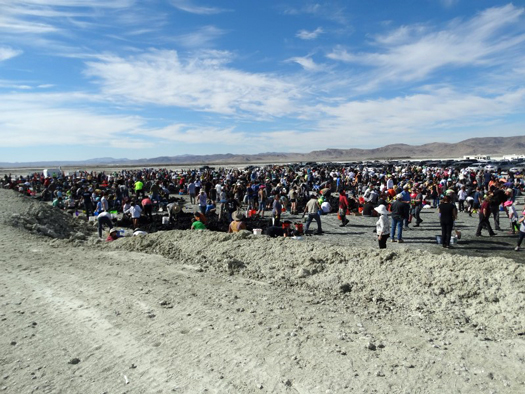



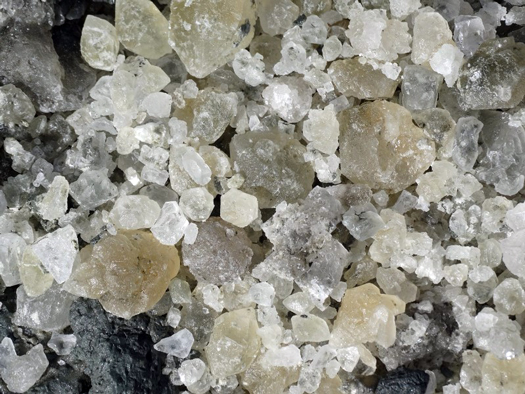


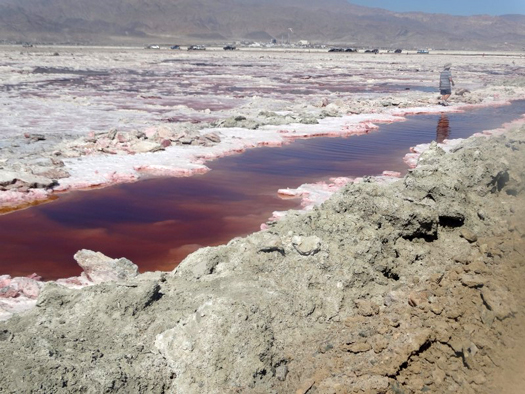

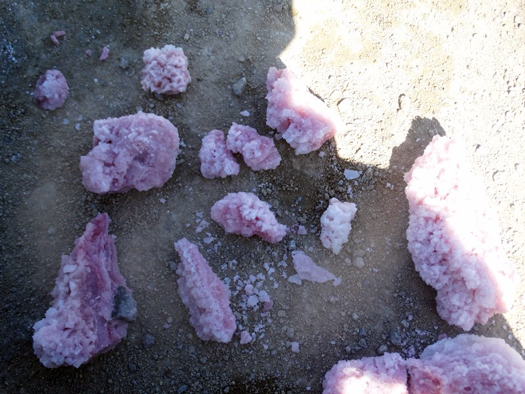
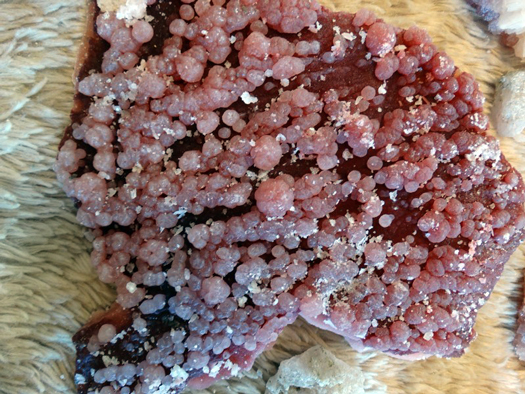



No comments:
Post a Comment
Note: Only a member of this blog may post a comment.